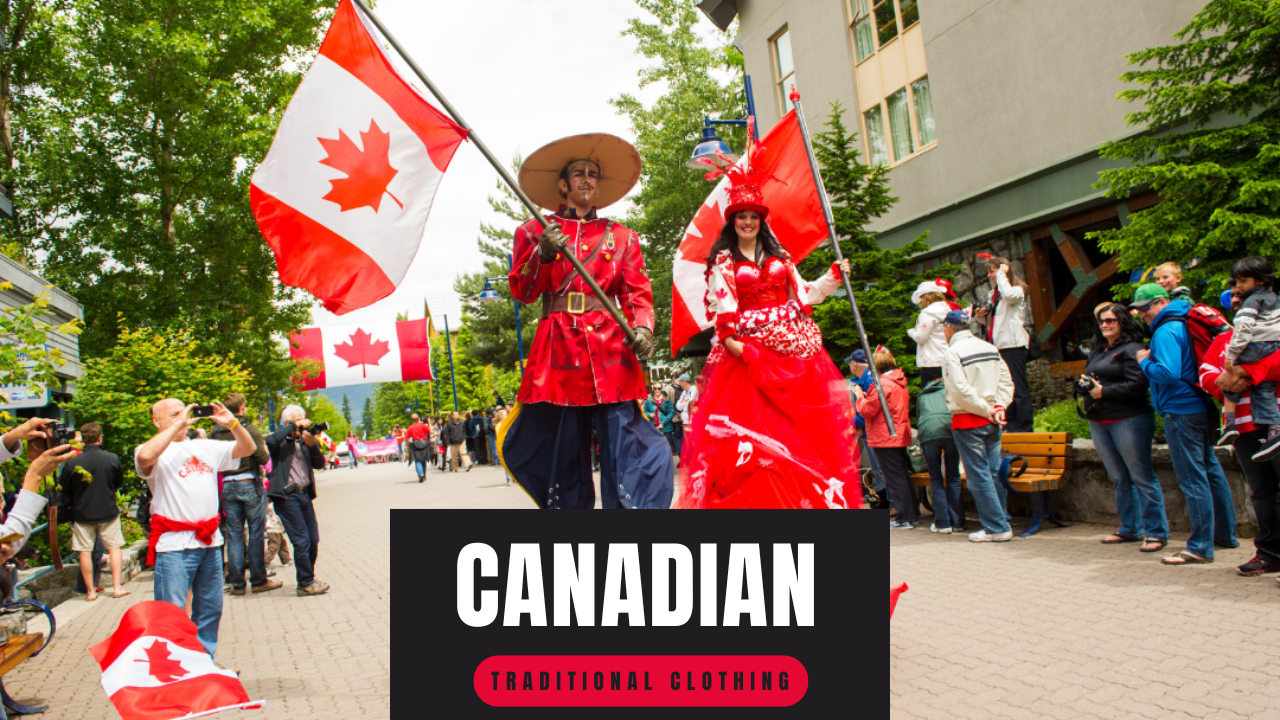Traditional Canadian clothing is a rich blend of function, culture, and climate-driven design. Rooted in the history of Indigenous peoples, it reflects survival, artistry, and deep respect for nature. From the far North to the temperate coasts, Canadians have relied on clothing from natural resources like hides, fur, and wool.
The Inuit, in particular, created smart and effective garments such as Inuit traditional clothing, which included caribou skin clothing and sealskin garments that protected against the harsh Arctic cold. These items weren’t just for warmth—they were part of everyday life and cultural identity. Today, they remain symbols of cold climate clothing adaptation and enduring Canadian heritage.
Historical Background of Canadian Clothing
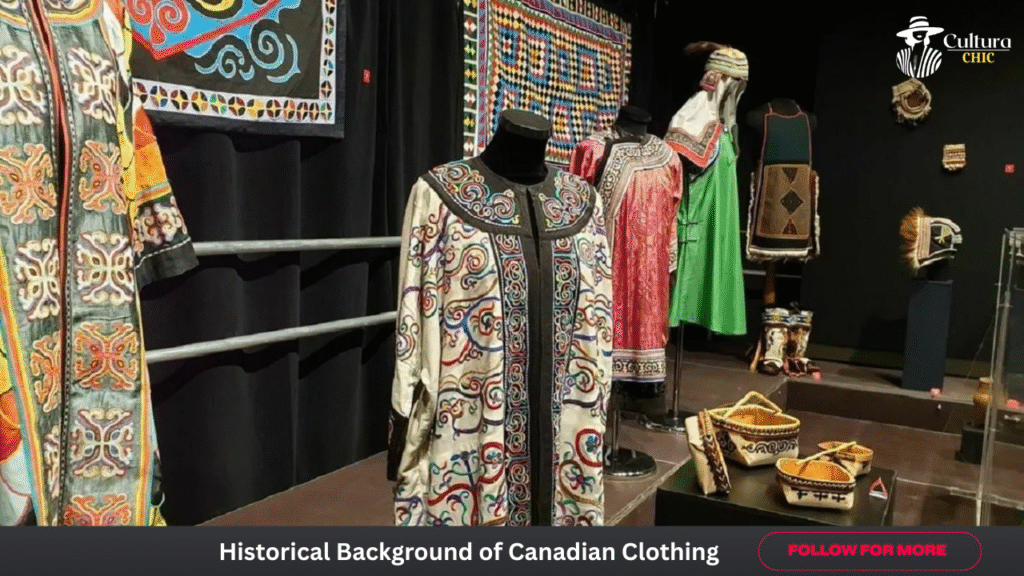
Traditional Canadian clothing comes from a long and rich past. It began with the first peoples of Canada. They made clothes from nature. They used clothing from natural resources like hides and fur. In the far north, the Inuit made Inuit traditional clothing. This included caribou skin clothing and sealskin garments. These items helped them survive the cold. They also created layered winter outfits. The hair side inward/outward design kept them warm and dry.
Later, when settlers came from Europe, styles changed. French and British people brought cloth, coats, and shoes. But they learned from the locals. They saw how well Inuit cold weather clothing worked in harsh places. So, styles began to mix. That’s how new forms of traditional Canadian clothing grew. They became part of daily life across the country.
National and Regional Variations
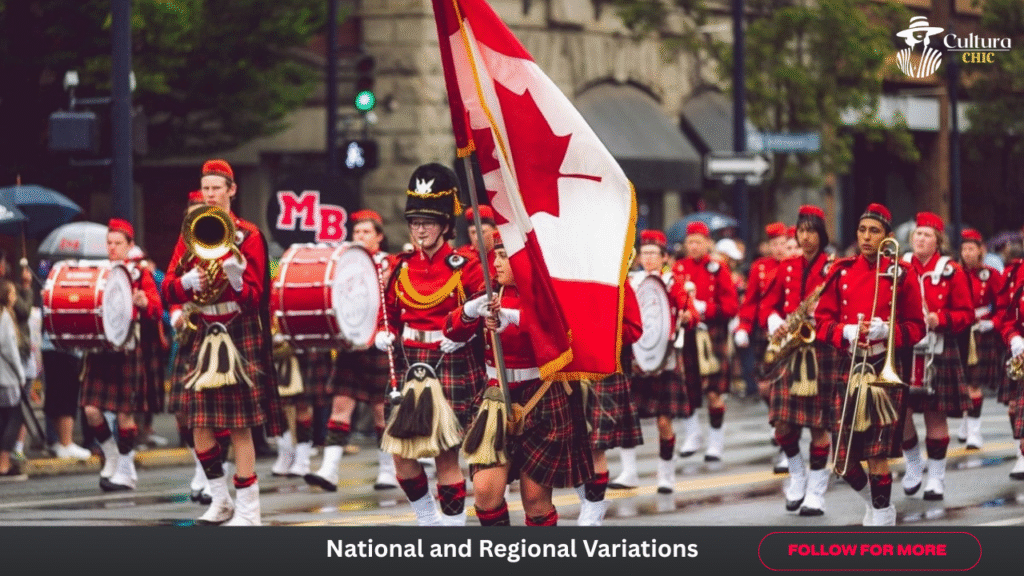
In each part of Canada, people wore different clothing. In the North, people wore Inuit fur parkas to survive. These thick coats covered the whole body. In the west, Kamiit boots were worn to walk in snow. In the east, people wore lighter furs with woven sashes. In the center of Canada, the Métis made colorful patterns using Indigenous sewing methods.
People in warm areas had lighter clothes. In cold places, they wore climate-appropriate garments. These were made using animal skin garments and strong threads like sinew thread. Each region made clothing that fit their weather. This was key for cold climate clothing adaptation. The way clothes changed in different areas shows how people lived with nature.
Iconic Traditional Canadian Outfits
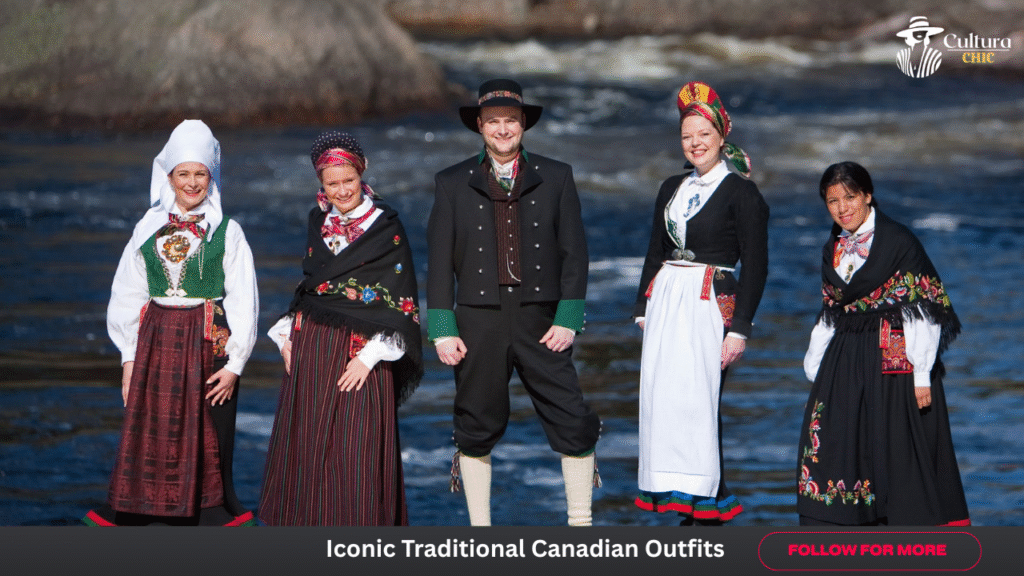
Some clothes are famous across Canada. The red jacket worn by the Mounties is one of them. Another is the Hudson’s Bay Coat. It has bright colored stripes. These clothes are part of national pride. In the North, people still use Inuit traditional clothing like Inuit winter wear. These are worn daily in Northern Canada clothing traditions.
The Inuit baby amauti is also well known. It is a coat for mothers to carry their babies. The Amauti (baby pouch parka) has a big hood and a soft pouch. The baby stays warm inside. This is an example of smart clothing insulation. It is also a part of Inuit cultural clothing and shows strong family care.
Traditional French Canadian Dress
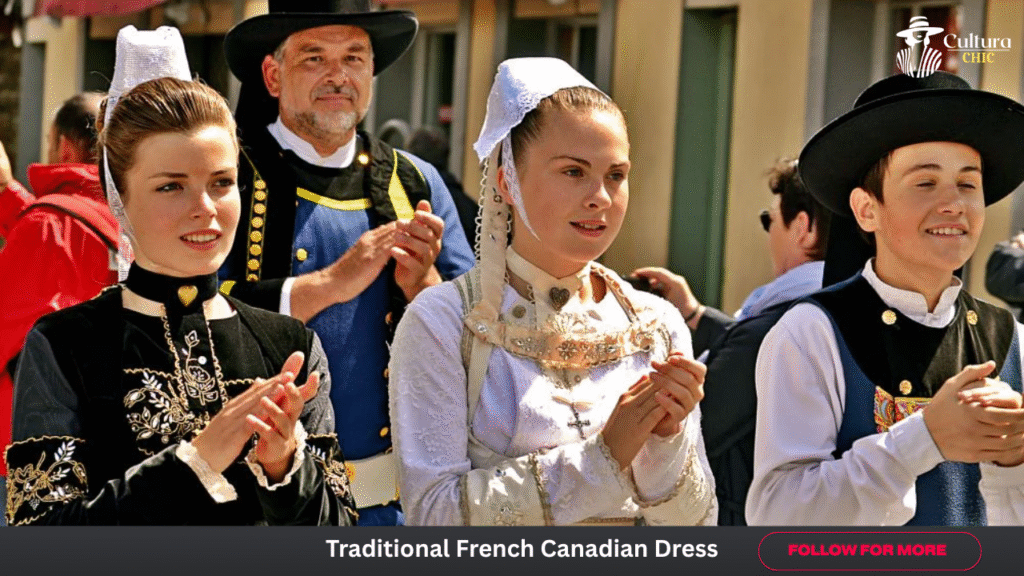
French Canadians wore wool trousers, shirts, and woven sashes. The sashes were used to support the back and looked nice too. Women wore long dresses, aprons, and bonnets. These styles mixed with local materials and skills.
These clothes changed over time. They still used strong cloth and warm wool, but they added color and pattern. These items became part of traditional Canadian clothing. You can still see them during festivals in Quebec.
Materials and Crafting Techniques
People used what they had in nature. They used caribou hide preparation for winter clothing. The seasonal hide use (fall skins, winter skins) mattered. Skins taken at the right time were soft and strong. People also used sealskin garments to stay dry. These hides were great for snow and ice. They made good footwear made from skins.
Making clothes was not easy. Women used tools like the ulu knife and bone needles. They stitched using sinew thread. These were part of Inuit sewing tools. The skills were passed down as knowledge transmission through generations. This work was part of gendered clothing roles in Inuit culture. Women knew how to cut, shape, and sew without tape or machines.
Common Materials in Traditional Canadian Clothing
| Material | Use | Features |
| Caribou Hide | Parkas, boots | Warm, light, floats in water |
| Sealskin | Boots, jackets | Waterproof, strong |
| Sinew | Thread | Strong and stretchy |
| Wool | Pants, sashes | Warm, easy to dye |
| Bone, Stone | Tools | Used to cut and sew |
Canadian Clothing Across Historical Eras
In the Fur Trade Era, clothing mixed cultures. Traders needed warm clothes. They wore animal skin garments and layered winter outfits. The Métis sash became popular. These clothes showed both need and culture. They were used for both work and ceremony.
In later years, fashion changed. In cities, people wore suits and dresses. But in the North, traditional clothing for survival stayed strong. During the wars, clothes became simpler. People had fewer materials. Yet Inuit cultural clothing stayed the same because it worked. It was made for cold, snow, and wind.
Symbolism & Patterns in Traditional Dress
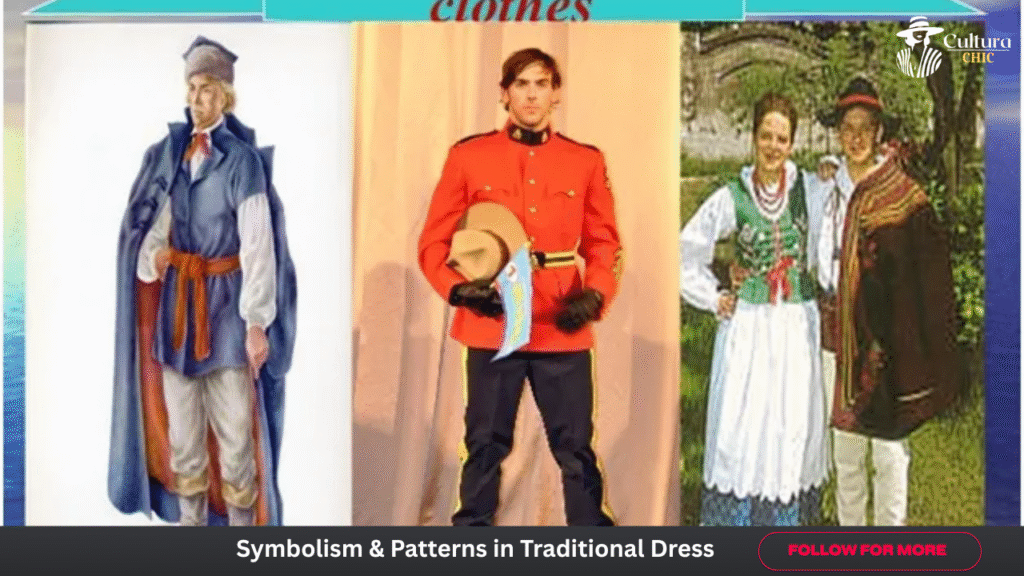
Clothes told stories. Beads, colors, and shapes had meaning. A sash could show peace, battle, or family. Beads on a jacket could mark a wedding or a hunt. Each symbol had value. These signs were not just pretty—they were history.
The Inuit baby amauti was more than warm. It showed care and love. It showed how Inuit women clothing roles helped keep the family safe. Clothing maintenance (chewing to soften) was also a daily task. Women chewed stiff leather to make it soft again. This kept the clothes useful and ready.
Modern Influence and Contemporary Adaptations
Today, these traditions are not forgotten. Young designers are mixing old and new. They use modern cloth but keep the look of Inuit traditional clothing. Some use fur and patterns in new ways. These clothes appear in fashion shows and art displays. They honor the past and show pride.
Even in the U.S., more people now know about Arctic Indigenous wear. Schools and museums teach others about traditional Canadian clothing. This helps protect the culture. It helps people learn where clothes come from and why they matter.
Conclusion
Traditional Canadian clothing is more than just something to wear. It shows us how people lived, worked, and stayed warm. It used strong skills like processing caribou skins and using bone needles to make clothes by hand. These were passed from mother to daughter, year after year.
These clothes still matter today. They are part of identity and history. Whether it is a soft caribou skin parka, a bright Métis sash, or an Inuit baby amauti, these clothes tell us stories. They remind us of the value of tradition, skill, and respect for the land.
FAQs about Traditional Canadian Clothing
What is traditional Canadian clothing made of?
It uses clothing from natural resources like hide, fur, and wool.
Do people still wear Inuit clothing today?
Yes. In many cold areas, people still use Inuit cold weather clothing like Inuit fur parkas and Kamiit boots.
How do you make these clothes?
With skills like manual leather softening techniques and using tools like the ulu knife.
What is an Amauti?
It is a baby pouch parka made for mothers to carry babies. It is a safe and warm item used daily.
Why are these clothes important?
They show culture, survival, and smart design. They teach us about the past and how people lived.
Welcome to Cultura Chic! I’m CHAUDHARY ALI, an AI-Powered SEO, and Content Writer with 2 years of experience.
